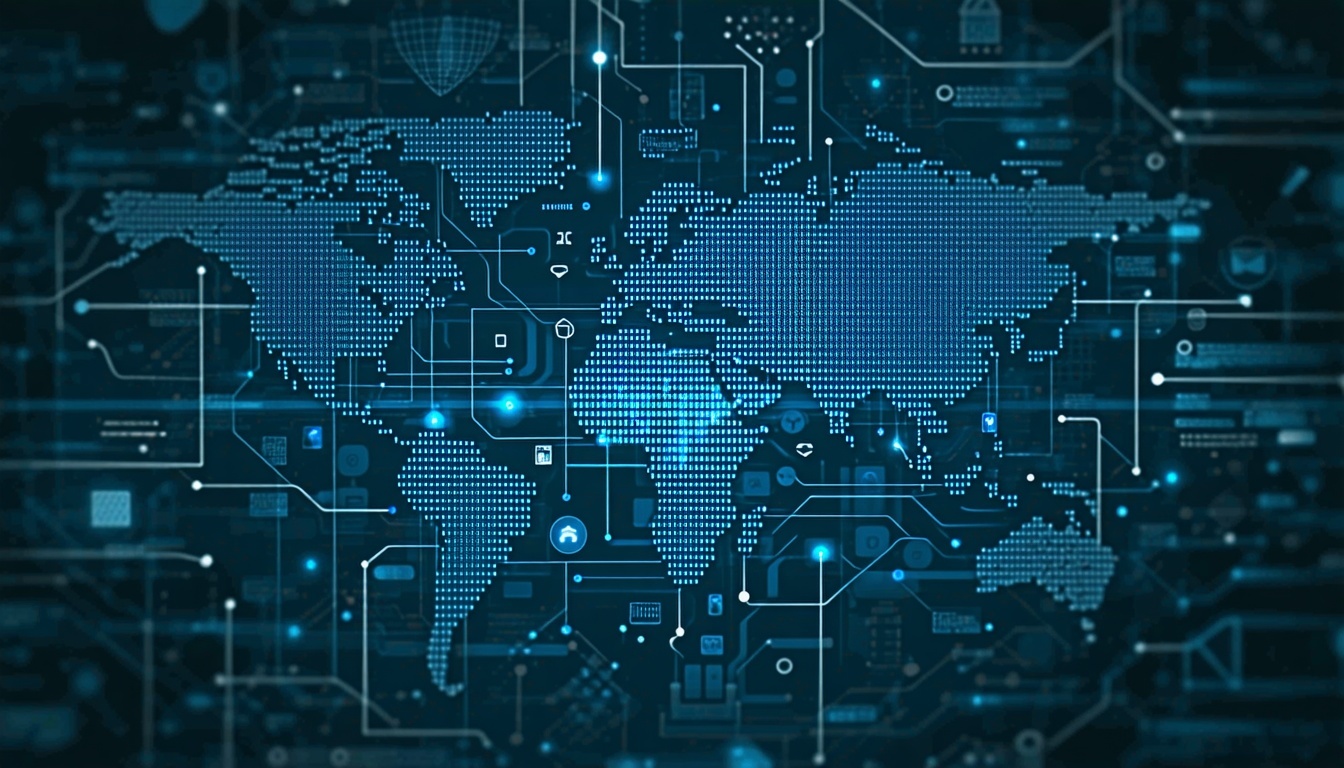October is Cybersecurity Awareness Month
Will you be working online? Researching a new security product, catching a webinar, or otherwise learning something new?
Will you be buying equipment or supplies on an e-commerce site? Posting company news on social media?Or will you be reading and sending emails to your team, and corresponding with associates through instant messaging?
As we enter the final quarter of the year 2021, it’s safe to assume that you will be doing at least a few of these activities next month. And guess what?
You Are In BIG Company!
You’ll be among the two-thirds of the world’s entire population who currently have access to the internet, and one of 20 million people who log in on any given day.
Let’s look at some of the record numbers that describe our internet use.
Internet Use by the Numbers
- Some 20 million people around the world go online every day, according to Zappedia.
- In the U.S., 81% of all adults go online on a daily basis, per data from Pew Research in 2019. (Another 10% claim they never use the internet, and another 8% don’t use it frequently.)
- Over 92% of internet users visit e-commerce sites to shop for goods and services online.
- More than three-quarters of online shoppers (78.6%) follow through with online purchases.
- Internet users spend an average of 6 hours and 56 minutes online every day, according to DataReportal in 2021. This average includes business internet use as well as consumer or personal use.
- Two-thirds of the world’s population (65.6%) currently have access to the internet, according to Internet World Stats 2021.
- Today, the internet is home to more than 1.8 billion websites, according to Internet Live Stats. Amazing, considering that the very first website was created a mere 30 years ago, in August of 1991.
- Perhaps even more impressive are the three billion online searches that are conducted every day—and that’s just using Google.
- English is the primary language of the internet, followed by Chinese, Spanish, and Japanese in that order, according to Zappedia.
- More than three-quarters of U.S. households have both a computer and a smartphone. Some 77% have a desktop or laptop computer, 76% have a smartphone, and 58% have a tablet in the household, according to the U.S. Census Bureau’s 2016 American Community Survey Report.
- The vast majority of adults online at home use the internet for email (87.7%), followed by information searches (64.2%), and checking news, weather or sports (52.5%), according to data collected in the 2000 U.S. Census. Almost 40% use it to shop or pay bills and 33.7% use it for job-related tasks.
- There are currently more than 260 million smartphone users in the U.S., according to the Newzoo Global Mobile Market Report. This represents roughly 80% of the U.S. population. Only China and India have more smartphone users (in the billions), although as a percentage of their populations that number represents 60% and 25% respectively.
Aside from households, most businesses and government entities also employ both computers and smartphones in their device mix—even if in some cases the smartphones are personal devices that are also used for work.
Last year nearly 62 million personal computers were shipped in the U.S., according to a Statista report on the U.S. PC market. PCs range from workstation products like desktop computers to portable computers like laptops, notebooks, and tablets.
That’s enough PCs to supply more than 20% of the entire population of the U.S. In a single year. What does that say about our ongoing demand for personal computers?
Benefits of Internet Use
We are universally aware of the benefits of the internet and of having online access through a variety of smart devices, whether desktops, laptops, tablets, smartphones, or a combination.
- We use the internet to conduct business locally, nationally, and globally.
- To buy, sell, and trade goods and services.
- To stay in touch with each other.
- To keep up with what’s happening around us.
- And to entertain ourselves.
Today, we are accustomed to immediate, fast, reliable internet connectivity. In fact, many of us take it for granted. It’s hard to believe that we had been using standalone computers commercially for four decades before the internet became available to the general public. Four decades! During those forty years, computers might break or become obsolete, but they weren’t attacked or hacked.
All that changed when computers and connectivity became joined at the hip in the early 1990s. Internet connectivity has made computers the most powerful tools in our world, processing what is perhaps our most valuable asset—information.
Internet connectivity has also made computers and digital data vulnerable to ransomware, malware, and many other criminal exploits.
Risks of Internet Use
As the internet has grown explosively over time, so have its uses. In 2020, for example, some 428 billion credit card transactions were processed worldwide, according to Statista. Over 306 billion emails were sent and received. And $900 billion more was spent at online retailers worldwide in 2020 compared with the prior two-year trend, according to the Mastercard Economics Institute. Hundreds of billions of transactions fly through the air with the greatest of ease.
The vastness of cyberspace, and its relative anonymity, have given rise to organized gangs of cybercriminals who have profited by exploiting these activities and other internet uses. They employ phishing techniques to trick employees into disclosing private company data. Trojan horses that enter networks undetected to release malware that steals data. Ransomware that renders company data unreadable until a hefty ransom is paid in cyber currency. And numerous other criminal techniques that wreak havoc on internal systems and cause data breaches that go public.
For businesses, governments, and consumers alike, cybersecurity should be top of mind not only during Cybersecurity Awareness Month but all year long. All-day, every day. The risks are simply too high, our data too valuable, and our reputations too hard-won to do anything less.
Employee training, state-of-the-art intrusion detection and prevention systems, employee training, robust firewalls, certified IT professionals, employee training, website security apps, and other safeguards all play a role in securing our data.
Did we mention the importance of employee training? As the weakest link in the security chain—and yet often the first line of defense—your employees require training and periodic retraining in cybersecurity awareness in order to reduce your business risk.
Summary
Although the first internet website was created just 30 years ago, today there are more than 1.8 billion websites worldwide. Every day, 20 million people around the world go online, including 81% of adults in the U.S. Hundreds of billions of transactions fly across the internet each year, including 428 billion credit card transactions and 306 billion emails in 2020 alone.
The opportunities for quick profits on the black market are abundant and too tempting for cybercriminals to resist. That’s why it’s so important for businesses, governments, and consumers to be aware of the constant need for vigilance online, and the importance of maintaining robust cybersecurity at all times.
We hope you’ll join with 24By7Security, the Cybersecurity and Infrastructure Security Agency (CISA), and thousands of other businesses and agencies in promoting cybersecurity awareness among employees, suppliers, partners, clients, and other stakeholders.
#CybersecurityAwarenessMonth and #BeCyberSmart











